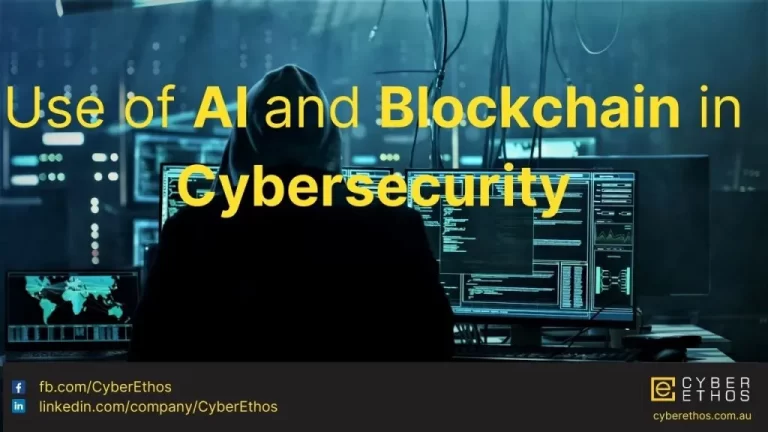Use of AI and Blockchain in cybersecurity
Blockchain and AI (artificial intelligence) are two potent technologies that are rapidly being used in cybersecurity to strengthen defences and fend off emerging threats. Here is how blockchain and AI are applied to cybersecurity:
Cybersecurity and AI
Threat Identification and Evaluation :
Massive amounts of data can be analyzed in real-time by AI-powered systems to look for patterns and abnormalities that might point to a cyberattack. Machine learning algorithms can recognize odd behavior, assisting in the early identification of potential dangers.
Predictive Analytics:
Based on past data and recognized attack patterns, artificial intelligence can forecast potential security concerns. Organizations can resolve vulnerabilities with this proactive strategy before they are used against them.
UEBA :
UEBA stands for User and Entity Behavior Analytics. AI can track and examine user and entity behavior to spot shady goings-on or insider threats. It can assist in identifying anomalous login behaviors or data access, generating alarms as needed.

Automated Incident Response:
AI-driven solutions can speed up response times and limit damage by automating incident response processes including isolating affected systems, installing fixes, and neutralizing threats in real-time.
Fraudulent Activity Detection :
In order to help people avoid falling for frauds, AI systems can analyze emails and webpages to identify phishing attempts by identifying patterns frequently linked with phishing assaults.
Vulnerability Management:
AI can prioritize and evaluate infrastructure vulnerabilities, enabling security teams to concentrate on the most important threats and deploy resources efficiently.
Blockchain’s role in cybersecurity
Immutable Records :
Decentralized and impenetrable, blockchain is perfect for storing and protecting sensitive data like logs, access records, and digital identities. Data integrity is ensured by the fact that once information is put to the blockchain, it cannot be changed.
Identity Management :
Blockchain technology can be applied to safely handle and authenticate identities. Identity theft is less likely when people have self-sovereign digital identities that they manage.
Smart Contracts :
On blockchain platforms like Ethereum, smart contracts may automate and enforce security rules and access restrictions. They make sure that only individuals with permission can access particular resources or data.
Supply Chain Security :
By tracking the origin of items and verifying their legitimacy, blockchain is utilized to safeguard the supply chain. This lessens the likelihood of fraud and tampering.
Secure Data Exchange:
Blockchain enables the exchange of data between organizations in a safe and auditable manner. Transparency and independence from a centralized authority are both possible when sharing encrypted data among authorized parties.
Decentralised threat intelligence:
It is a useful tool. Organizations can share information about new threats and vulnerabilities anonymously and securely using a decentralized network for exchanging threat intelligence built on blockchain.
Zero Trust Architecture:
Blockchain can be incorporated into Zero Trust security models to guarantee that all entities, including users and devices, are continually verified and authorized, independent of their location inside or outside the network.
In conclusion, blockchain and AI technologies are essential components of contemporary cybersecurity plans. While blockchain protects the integrity, validity, and safe exchange of vital data and identities, AI improves danger detection and response capabilities. Combining these technologies can produce cybersecurity solutions that are more reliable and resilient. This solution will provide to you by our team just drop one message to us we will contact you.
